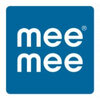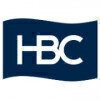Filter interviews by
7 Eleven Interview Questions and Answers
19 Interview questions
Yes, I am comfortable with WFO (Work From Office) as it is the primary mode of work.
I have experience working in a WFO environment in my previous roles.
I am familiar with the expectations and responsibilities of working in an office setting.
I am adaptable and can easily transition between WFO and WFH (Work From Home) as needed.
Nested queries are used to retrieve data from multiple tables in a database.
Use subqueries to retrieve data from a nested query within the main query.
Use JOIN statements to combine data from multiple tables in a nested query.
Nested queries can be used in SELECT, INSERT, UPDATE, and DELETE statements.
To handle hashmap memory leak, ensure proper management of keys and values, use weak references, and periodically check for unused entries.
Avoid storing unnecessary data in the hashmap
Use weak references for keys or values if appropriate
Periodically check for and remove unused entries to free up memory
Exception handling is a programming concept that deals with errors during program execution.
Exception handling allows for graceful handling of errors in a program.
It involves try, catch, and finally blocks to handle exceptions.
Examples include catching divide by zero errors or file not found exceptions.
Design a system for sequential transactions with rollback on failure
Use a transaction manager to coordinate the two transactions
Implement a try-catch mechanism to handle failures and trigger rollback if needed
Ensure that both transactions are part of the same unit of work
Event bubbling is a concept in JavaScript where events triggered on a child element will also trigger on its parent elements.
Event bubbling is the process where an event is first captured and handled by the innermost element and then propagated to its parent elements.
This allows for event delegation, where a single event listener can be placed on a parent element to handle events for multiple child elements.
Event....
Implement timer in React using useTimeout and disable it after unmounting
Use useState to store the timer ID
Use useEffect to start the timer on component mount and clear it on unmount
Use clearTimeout to disable the timer when the component unmounts
Implementing parent-child component relationship in React allows for data flow and interaction between components.
Use props to pass data from parent to child: <ChildComponent data={this.state.data} />
Use callback functions to send data from child to parent: <ChildComponent onChange={this.handleChange} />
Manage state in the parent component and pass it down to children for controlled components.
Example ...
Streams in Node.JS allow for efficient handling of data by reading or writing it in chunks rather than all at once.
Streams are instances of EventEmitter class in Node.JS
There are four types of streams in Node.JS: Readable, Writable, Duplex, and Transform
Streams can be used for reading files, handling HTTP requests, and processing large amounts of data efficiently
BPO stands for Business Process Outsourcing, where a company contracts out specific business tasks to a third-party service provider.
BPO companies handle tasks such as customer service, technical support, data entry, and more for other businesses.
Companies outsource these tasks to BPOs to save costs, improve efficiency, and focus on core business functions.
BPOs may operate onshore, nearshore, or offshore, dependin...
7 Eleven Interview Experiences
20 interviews found
I appeared for an interview in Sep 2024.
(2 Questions)
- Q1. Node JS and React questions and snippet answers.
- Q2. Medium DSA question on arrays
(1 Question)
- Q1. SOLID Principles, system design, LLD
I applied via Instahyre and was interviewed in May 2024. There was 1 interview round.
(4 Questions)
- Q1. Design a system where 2 transaction should happen one after the other. Both should pass and if one fails none should be persist or eventually all txn should roll back
- Ans.
Design a system for sequential transactions with rollback on failure
Use a transaction manager to coordinate the two transactions
Implement a try-catch mechanism to handle failures and trigger rollback if needed
Ensure that both transactions are part of the same unit of work
- Q2. Whats is Kafka, Partition, ConsumerGroup
- Ans.
Kafka is a distributed streaming platform, Partition is a way to divide data, ConsumerGroup is a group of consumers sharing the load.
Kafka is a distributed streaming platform used for building real-time data pipelines and streaming applications.
Partition is a way to divide data within a Kafka topic to allow for parallel processing and scalability.
ConsumerGroup is a group of consumers that work together to consume data ...
- Q3. Exception handling in detail
- Ans.
Exception handling is a programming concept that deals with errors during program execution.
Exception handling allows for graceful handling of errors in a program.
It involves try, catch, and finally blocks to handle exceptions.
Examples include catching divide by zero errors or file not found exceptions.
- Q4. How to handle hashmap Memory leak
- Ans.
To handle hashmap memory leak, ensure proper management of keys and values, use weak references, and periodically check for unused entries.
Avoid storing unnecessary data in the hashmap
Use weak references for keys or values if appropriate
Periodically check for and remove unused entries to free up memory
Interview Preparation Tips
Skills evaluated in this interview
I applied via LinkedIn and was interviewed in Jun 2024. There were 2 interview rounds.
There are 2 questions on array and linkedlist
(2 Questions)
- Q1. What is normalization ?
- Ans.
Normalization is the process of organizing data in a database to reduce redundancy and improve data integrity.
Normalization involves breaking down a database into smaller, more manageable tables.
It helps in reducing data redundancy by storing data in a structured manner.
Normalization ensures data integrity by minimizing the chances of anomalies during data manipulation.
There are different levels of normalization such a...
- Q2. Given a sample , write some nested quries.
- Ans.
Nested queries are used to retrieve data from multiple tables in a database.
Use subqueries to retrieve data from a nested query within the main query.
Use JOIN statements to combine data from multiple tables in a nested query.
Nested queries can be used in SELECT, INSERT, UPDATE, and DELETE statements.
I applied via Company Website and was interviewed in May 2024. There were 2 interview rounds.
(2 Questions)
- Q1. Tell about the projects you did in college
- Ans.
I completed a project on optimizing supply chain processes for a local manufacturing company.
Researched current supply chain processes and identified areas for improvement
Implemented new inventory management system to reduce stockouts and excess inventory
Collaborated with cross-functional teams to streamline procurement processes
Presented findings and recommendations to company executives for implementation
- Q2. Tell about you understanding of supply chain in retain industry
- Ans.
Supply chain in retail involves sourcing, procurement, logistics, and inventory management to ensure product availability and efficiency.
Sourcing: Identifying and selecting suppliers for quality products, e.g., partnering with local farmers for fresh produce.
Procurement: Negotiating contracts and purchasing goods at competitive prices, e.g., bulk buying seasonal items to reduce costs.
Logistics: Managing transportation ...
(2 Questions)
- Q1. Salary discussion
- Q2. It is mostly WFO so are you comfortable in it
- Ans.
Yes, I am comfortable with WFO (Work From Office) as it is the primary mode of work.
I have experience working in a WFO environment in my previous roles.
I am familiar with the expectations and responsibilities of working in an office setting.
I am adaptable and can easily transition between WFO and WFH (Work From Home) as needed.
Interview Preparation Tips
- Suppply chain management
I appeared for an interview in Dec 2024, where I was asked the following questions.
- Q1. Tell me what is Data Engineering
- Ans.
Data Engineering involves designing, building, and maintaining systems for collecting, storing, and analyzing data efficiently.
Data engineers create data pipelines to automate data collection from various sources, such as APIs or databases.
They ensure data quality and integrity by implementing validation checks and cleaning processes.
Data engineers work with big data technologies like Apache Hadoop and Spark to process...
- Q2. Tell me about your self
Interview Preparation Tips
I applied via Naukri.com and was interviewed in Jul 2024. There was 1 interview round.
Asked basics of selenium and appium
(2 Questions)
- Q1. How you heared about us ?
- Q2. Salary Negotiations
I applied via Approached by Company and was interviewed in Nov 2023. There were 2 interview rounds.
Leetcode Easy Questions
(3 Questions)
- Q1. Event Bubbling in JS
- Ans.
Event bubbling is a concept in JavaScript where events triggered on a child element will also trigger on its parent elements.
Event bubbling is the process where an event is first captured and handled by the innermost element and then propagated to its parent elements.
This allows for event delegation, where a single event listener can be placed on a parent element to handle events for multiple child elements.
Event.stopP...
- Q2. Simple question in React to implement child parent relation component
- Ans.
Implementing parent-child component relationship in React allows for data flow and interaction between components.
Use props to pass data from parent to child: <ChildComponent data={this.state.data} />
Use callback functions to send data from child to parent: <ChildComponent onChange={this.handleChange} />
Manage state in the parent component and pass it down to children for controlled components.
Example of ch...
- Q3. Implement timer in React, useTimeout and disbale the timer after unmounting
- Ans.
Implement timer in React using useTimeout and disable it after unmounting
Use useState to store the timer ID
Use useEffect to start the timer on component mount and clear it on unmount
Use clearTimeout to disable the timer when the component unmounts
Interview Preparation Tips
Prepare react and javascript well
Skills evaluated in this interview
Normal spring bott and microservices questions
Interview Preparation Tips
I applied via Naukri.com and was interviewed in Apr 2024. There was 1 interview round.
(1 Question)
- Q1. Tell me about youeself
Top trending discussions






7 Eleven Interview FAQs
Some of the top questions asked at the 7 Eleven interview -
The duration of 7 Eleven interview process can vary, but typically it takes about less than 2 weeks to complete.
Tell us how to improve this page.
7 Eleven Interviews By Designations
- 7 Eleven Software Engineer2 Interview Questions
- 7 Eleven Accountant Interview Questions
- 7 Eleven Lead Engineer Interview Questions
- 7 Eleven Senior Analyst Interview Questions
- 7 Eleven Financial Analyst Interview Questions
- 7 Eleven Sales Associate Interview Questions
- 7 Eleven Intern Interview Questions
- 7 Eleven Project Lead Interview Questions
- Show more
Interview Questions for Popular Designations
Overall Interview Experience Rating
based on 27 interview experiences
Difficulty level
Duration
Interview Questions from Similar Companies
7 Eleven Reviews and Ratings
based on 109 reviews
Rating in categories
|
Lead Engineer
51
salaries
| ₹25 L/yr - ₹42.4 L/yr |
|
Software Engineer
38
salaries
| ₹14.5 L/yr - ₹25.1 L/yr |
|
Senior Software Engineer
37
salaries
| ₹12.2 L/yr - ₹40 L/yr |
|
Software Engineer II
36
salaries
| ₹12.1 L/yr - ₹28.4 L/yr |
|
Software Developer
35
salaries
| ₹17.4 L/yr - ₹30 L/yr |

Best Sellers

Alshaya Group

Quest Retail Private Limited

Me n Moms
- Home >
- Interviews >
- 7 Eleven Interview Questions














